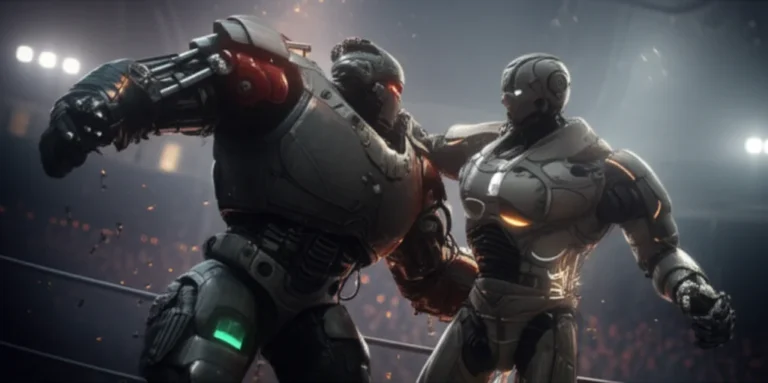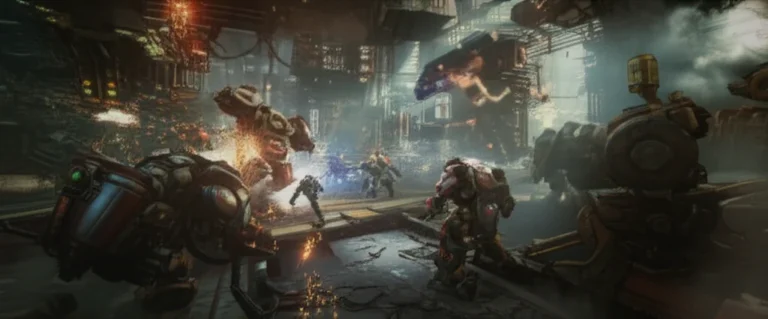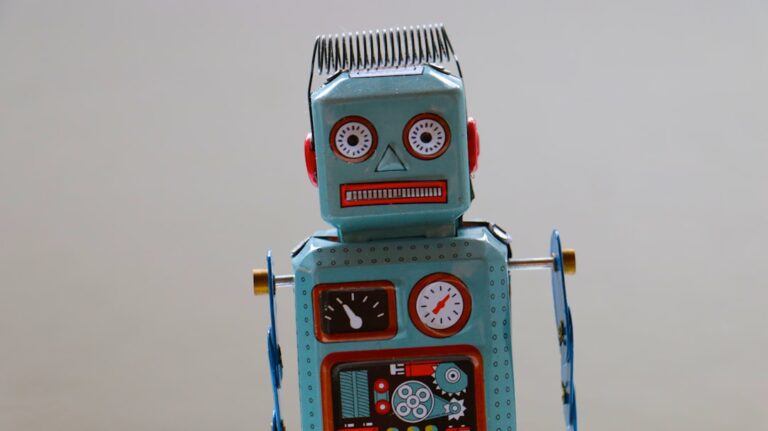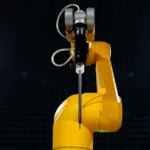Support our educational content for free when you buy through links on our site. Learn more
When Did People Stop Thinking Wrestling Was Real? 🤔 (2025)
For decades, professional wrestling thrived on one of the greatest illusions in sports entertainment history: the belief that it was a genuine, unscripted contest. But when exactly did fans start to realize that wrestling was more performance than pure competition? Was it a sudden revelation or a slow unraveling? Spoiler alert: the truth didn’t come crashing down all at once. Instead, it was a fascinating journey filled with secret codes, televised slip-ups, and a landmark confession that changed everything.
In this deep dive, we’ll explore the golden age of kayfabe, the pivotal moments that cracked the façade, and why millions still cheer for “fake” wrestling today. Plus, we’ll share insider stories from our team at Robot Wrestling™—where we know a thing or two about blending reality with spectacle. Stick around for the surprising parallels between wrestling’s scripted drama and the real battles in the Robot Wrestling League!
Key Takeaways
- Wrestling’s scripted nature was an open secret long before it was publicly acknowledged.
- The concept of “kayfabe” kept the illusion alive for decades, with wrestlers living their characters on and off camera.
- Vince McMahon’s 1989 congressional testimony was the watershed moment that officially rebranded wrestling as “sports entertainment.”
- The rise of television, investigative journalism, and the internet gradually exposed the scripted reality to fans.
- Despite knowing the outcomes are predetermined, fans continue to passionately engage with wrestling for its storytelling, athleticism, and community.
- Understanding wrestling’s history and terminology enhances appreciation for the craft behind the spectacle.
Curious about how this all unfolded and what it means for fans today? Keep reading to uncover the full story—and discover why wrestling’s magic is far from broken.
Table of Contents
- ⚡️ Quick Tips and Facts: Unmasking Wrestling’s Reality
- 🤼 The Grand Illusion: A History of Wrestling’s Perceived Reality
- 📉 The Cracks in the Facade: When Did the Truth About Wrestling Start Leaking Out?
- 🎤 The Moment of Truth: Vince McMahon’s Game-Changing Admission
- 🤔 Why Do We Still Watch? The Enduring Appeal of “Fake” Wrestling
- 💡 Expert Insights: Navigating the Modern Wrestling Landscape
- 📈 The Evolution of Fandom: From Believers to “Smart Marks” and Beyond
- 🌟 Personal Anecdotes: Our Journey with Wrestling’s Reality and Illusion
- Conclusion
- Recommended Links
- FAQ
- Reference Links
Here is the main content for your blog post.
⚡️ Quick Tips and Facts: Unmasking Wrestling’s Reality
Welcome, wrestling fans and robot combat aficionados! We’re the team at Robot Wrestling™, and while our days are filled with circuits, servos, and steel-crushing carnage, our nights are often spent marveling at the spectacle of professional wrestling. We know a thing or two about building a performance, whether it’s a 250-pound bot or a 250-pound superstar. If you’re looking to get into building your own mechanical gladiator, check out our ultimate guide on How Do I Build a Robot for Robot Wrestling? 🤖 Ultimate Guide (2025).
So, you’re asking the age-old question: “When did people stop thinking wrestling was real?” The short answer is… it’s complicated! There wasn’t a single day the world woke up and said, “It’s fake!” It was more like a slow, dramatic unmasking. Here are the key beats:
| Key Event/Era | Approximate Timeframe | Significance |
|---|---|---|
| Carnival Origins | Late 19th/Early 20th Century | Wrestling began as a legitimate, albeit often manipulated, contest at carnivals. The “fix” was in from the start. |
| The Rise of “Kayfabe” | 1920s – 1980s | The wrestling industry’s inside term for maintaining the illusion of reality at all costs. |
| Television Exposure | 1950s onwards | TV brought wrestling into millions of homes, but also exposed repetitive moves and storylines, raising suspicion. |
| Journalistic Exposés | 1970s – 1980s | Investigative reports and articles began to pull back the curtain on the business. |
| Vince McMahon’s Testimony | February 10, 1989 | The watershed moment. McMahon admitted wrestling was “sports entertainment” to avoid state athletic commission regulations. |
| The Internet Era | Mid-1990s – Present | “Dirt sheets” and online forums blew the lid off storylines, results, and backstage drama for good. |
Key Takeaways:
- ✅ There was no single “gotcha” moment for everyone. The realization dawned on different people at different times, from the 1920s all the way to the 1990s.
- ✅ The industry actively protected its secrets. The concept of kayfabe was a strict code of silence that wrestlers and promoters lived by.
- ❌ “Fake” is the wrong word. While the outcomes are predetermined, the athleticism is real, the risks are real, and the pain is very real.
- ✅ The big public admission came in 1989. Vince McMahon, chairman of the then-WWF (now WWE), officially termed it “sports entertainment” in a legal setting.
🤼 The Grand Illusion: A History of Wrestling’s Perceived Reality
To understand when the illusion shattered, you first have to appreciate how masterfully it was built. Think of it like one of our complex robot designs; every wire and gear has a purpose, all working together to create a seamless performance. For decades, wrestling’s performance was reality.
🎭 The Golden Age of Kayfabe: When Wrestling Was “Real”
Long before the pyrotechnics and sold-out arenas, professional wrestling had its roots in the gritty world of traveling carnivals. Back then, promoters needed a way to control the outcomes to protect their star attractions and, well, their money. This is where the “fix” came in, but it was a closely guarded secret.
This era gave birth to kayfabe—the sacred, unspoken rule to present wrestling as 100% legitimate competition.
- Heels and Babyfaces Lived the Gimmick: If you were a villain (“heel”), you acted like a jerk in public. If you were a hero (“babyface”), you were a role model. They couldn’t be seen traveling together or socializing.
- Protecting the Business: Breaking kayfabe could get a wrestler blackballed from the entire industry. It was serious business.
- The Emotional Investment: This dedication is what made fans believe. They genuinely hated the villains and adored the heroes. The emotions were completely, undeniably real. Check out some of these classic bouts in our Famous Matches archive to see what we mean.
🤫 The Unspoken Code: Maintaining the Illusion of Authenticity
Maintaining kayfabe was an art form. Wrestlers would use insider jargon—or “carny talk”—to communicate in front of outsiders without revealing secrets. They would inflict real pain on each other with stiff shots if a local tough guy in the crowd thought he could take them on, just to prove their legitimacy. It was a constant, 24/7 performance. This dedication to the craft is something we deeply respect in our Robot Design philosophy—total commitment to the final product.
📉 The Cracks in the Facade: When Did the Truth About Wrestling Start Leaking Out?
Every great illusion eventually shows its seams. For wrestling, the cracks started small and grew into gaping holes over several decades.
📺 The Rise of Television and Behind-the-Scenes Peeks
Television was a double-edged sword. In the 1950s, it launched wrestlers like Gorgeous George into superstardom. But it also meant that fans could now watch matches every single week.
- Pattern Recognition: Viewers started noticing that certain moves never seemed to cause a pinfall, or that wrestlers seemed to recover from “devastating” injuries awfully quickly.
- Regional Exposure: As television syndication grew, fans could see a wrestler lose a “Loser Leaves Town” match in one territory, only to pop up on another channel in a different territory the next week. Oops!
This slow-burn exposure was the first major blow to the illusion. Fans were getting smarter, and the curtain was being pulled back, inch by inch. Our Behind the Scenes section often explores how technology changes the game, and this was a prime example.
🗣️ Wrestlers Breaking Character: Early Confessions and Exposés
While most wrestlers towed the company line, a few brave—or disgruntled—souls started talking. In 1984, the ABC news program 20/20 ran an exposé featuring wrestler “Dr. D” David Schultz, who infamously slapped reporter John Stossel for asking if wrestling was fake. While Schultz maintained it was real on camera, the segment featured other retired wrestlers admitting to the choreographed nature of the business. This was a huge national story and planted a major seed of doubt in the public consciousness.
🎤 The Moment of Truth: Vince McMahon’s Game-Changing Admission
If the previous decades were cracks in the dam, this was the moment the whole thing burst. And it came from the most unlikely of sources: the biggest promoter in the world.
🗓️ The Congressional Testimony: Acknowledging “Sports Entertainment”
The date was February 10, 1989. Vince McMahon, head of the World Wrestling Federation, was in a battle with the New Jersey State Athletic Commission over costly regulations and taxes applied to legitimate sporting events. To get out from under their thumb, he and his wife Linda McMahon made a stunning admission to the New Jersey Senate.
He openly testified that professional wrestling was not a sport in the traditional sense, but rather “sports entertainment.” He admitted that the outcomes were predetermined and that the characters and storylines were just that—entertainment.
This was it. The king of the industry had just told the world the secret.
🌍 The Aftermath: How the Revelation Reshaped Professional Wrestling
Did fans abandon wrestling in droves? Absolutely not! In fact, the business boomed. By pulling back the curtain, McMahon gave himself and the fans a new kind of freedom.
- Creative Liberation: Storylines could become more outlandish and character-driven without the pretense of being a “real” sport. This paved the way for the explosive “Attitude Era” of the late 1990s.
- A New Contract with the Audience: Fans were now in on the secret. They could appreciate wrestling on a new level—as a unique form of theater, stunt work, and athletic storytelling.
This shift is something we discuss a lot in our Opinion Pieces: when does a competition become entertainment, and where is that line in robot combat?
🤔 Why Do We Still Watch? The Enduring Appeal of “Fake” Wrestling
So if everyone knows the secret, why are millions of people still tuning into shows like AEW Dynamite and WWE’s Monday Night Raw every week? Why do we, a team of engineers, get so hyped for our Event Announcements?
Because knowing the ending of a movie doesn’t stop you from enjoying the ride.
🤩 The Art of Storytelling and Athleticism: Beyond the “Real”
At its core, wrestling is one of the most unique art forms on the planet. It’s a live-action comic book, a violent ballet, and an improvised stunt show all rolled into one. The video embedded above, “What everyone gets wrong about the WWE being fake” by Business Insider, does a fantastic job of explaining this. It highlights that while the results are planned, the physical toll is immense.
You don’t have to believe it’s a real fight to appreciate the incredible athleticism of a wrestler like Ricochet or the masterful storytelling of a promo by MJF.
🤝 The Community and Fandom: A Shared Experience of “Sports Entertainment”
The feeling is real. Just ask Noelle Foley, daughter of wrestling legend Mick Foley. In a heartfelt post, she described being brought to tears during a WWE main event, exclaiming, “I CAN’T BELIEVE I’M HERE!!!” and using the hashtag #itsstillrealtomedammit. That raw emotion, shared with thousands of other fans in an arena, is a powerful, tangible thing. It’s the same energy we feel when a rookie robot scores a massive upset in our league!
🧠 The Suspension of Disbelief: Our Willing Participation in the Spectacle
This is the magic key. We know it’s scripted, but for those few hours, we choose to believe. We willingly suspend our disbelief to get lost in the drama, the action, and the characters. It’s the same reason we watch Game of Thrones or Star Wars. We know dragons and lightsabers aren’t real, but we buy into the world that’s presented to us. Wrestling is no different.
💡 Expert Insights: Navigating the Modern Wrestling Landscape
As experts in a field that blends engineering with entertainment, we can offer a unique perspective. Here’s how to watch modern wrestling like a pro.
✅ Understanding the “Work” and the “Shoot” in Professional Wrestling
To truly appreciate the art form, you need to know the lingo:
- Work: Anything planned or part of the script. The match, the promo, the storyline—it’s all a “work.”
- Shoot: When things get real and go off-script. A wrestler might say something they weren’t supposed to, or a punch might land for real. These moments are rare and often electrifying.
- Worked Shoot: The holy grail of modern wrestling. This is when a storyline is designed to look like a shoot. It blurs the line between reality and fiction, making fans question everything. The infamous “Pipebomb” promo by CM Punk is a masterclass in this.
❌ Dispelling Common Misconceptions About Wrestling’s Authenticity
Let’s clear a few things up with a quick true/false round:
- The ring is soft like a trampoline. ❌ FALSE. It’s basically wood boards over a steel frame with a thin layer of foam and canvas. It hurts. A lot.
- The wrestlers don’t actually hit each other. ❌ FALSE. While they “pull their punches,” the contact is real, and the bumps they take are punishing. The goal is to create the illusion of a real fight without permanently injuring your opponent.
- The blood is always fake. ❌ FALSE. While blood capsules are sometimes used, the practice of “blading” (a wrestler discreetly cutting their own forehead) was common for decades to add drama. It’s much rarer today in major promotions like WWE.
- It’s all just a bunch of guys in spandex. ✅ TRUE. And it’s awesome.
📈 The Evolution of Fandom: From Believers to “Smart Marks” and Beyond
The way we watch wrestling has evolved just as much as the product itself. The “secret” is out, and that has created a whole new type of fan.
🌐 The Internet’s Role in Exposing Kayfabe and Shaping Fan Perception
The rise of the internet in the mid-90s was the final nail in kayfabe’s coffin. Websites and newsletters, known as “dirt sheets,” like the Wrestling Observer Newsletter, began reporting on backstage news, contract negotiations, and future storylines. Suddenly, the most guarded secrets of the business were just a click away.
This gave rise to the “smart mark” or “smark”—a fan who knows the inner workings of the business and appreciates wrestling for its artistic and athletic merits rather than believing it’s a legitimate contest.
📱 Social Media and the Blurring Lines Between Reality and Storyline
Today, social media has blurred the lines more than ever. Wrestlers use platforms like X (formerly Twitter) and Instagram to interact with fans, often blending their real-life personalities with their on-screen characters. They might continue a storyline feud online or post pictures with a rival, completely shattering the old rules of kayfabe. It’s a new, interactive era where the performance never truly stops.
🌟 Personal Anecdotes: Our Journey with Wrestling’s Reality and Illusion
Here at Robot Wrestling™, we had our own “kayfabe” moment early on. In one of our first tournaments, we had two robots, “Saw-Los” and “The Crusher,” built by rival teams who genuinely disliked each other. We hyped up the “bad blood” for the crowd, and their match was intensely personal and destructive. The crowd went absolutely wild.
After the match, we found the two lead engineers shaking hands and poring over the wreckage together, admiring each other’s work. The rivalry was real, but the respect for the craft was greater. It taught us a valuable lesson: the story is what draws you in, but the skill and dedication behind the scenes are what earn your respect. Whether it’s a wrestler executing a perfect moonsault or an engineer designing an unbreakable chassis, the passion is 100% real.
Conclusion
So, when did people stop thinking wrestling was real? The answer isn’t a simple date but a fascinating journey through decades of storytelling, secrecy, and spectacle. From the carnival roots and the ironclad code of kayfabe to Vince McMahon’s landmark 1989 admission and the internet’s relentless exposure, the illusion gradually unraveled. Yet, wrestling didn’t lose its magic—it transformed.
Wrestling is not about fooling the audience anymore; it’s about inviting them into a shared, thrilling experience. The athleticism, the drama, the community—those are very real. Just like in robot wrestling, where the battles are genuine but the narratives add an electrifying layer of excitement, professional wrestling thrives on this blend of reality and performance.
For fans, understanding the history and the craft behind wrestling only deepens appreciation. For newcomers, remember: knowing the secret doesn’t spoil the fun—it enhances it. So next time you watch a match, whether it’s a WWE main event or a Robot Wrestling League showdown, savor the artistry, the passion, and the heart.
Ready to dive deeper into the world of wrestling and robot combat? Keep exploring, keep questioning, and most importantly, keep enjoying the show!
Recommended Links
Looking to explore wrestling and robot combat gear, or dive into the history and culture? Check out these handpicked resources:
- WWE Official Site: wwe.com
- All Elite Wrestling (AEW): allelitewrestling.com
- Wrestling Observer Newsletter: f4wonline.com
- Robot Wrestling League Official: robotwrestling.org
Books on Wrestling History and Culture:
-
“The Squared Circle: Life, Death, and Professional Wrestling” by David Shoemaker
Amazon Link -
“Wrestling’s Greatest Moments” by Brian Shields
Amazon Link -
“The Death of WCW” by R.D. Reynolds and Bryan Alvarez
Amazon Link
Robot Wrestling Gear and Design Resources:
-
Robot Combat Kits and Parts:
-
Robot Design Tutorials and Guides:
FAQ
When did professional wrestling become recognized as scripted entertainment?
Professional wrestling’s scripted nature was an open secret among insiders for much of the 20th century, but it became publicly acknowledged in a major way during Vince McMahon’s 1989 testimony before the New Jersey State Athletic Commission. McMahon admitted that wrestling was “sports entertainment” with predetermined outcomes to avoid costly regulations. Prior to that, many fans believed or wanted to believe wrestling was a legitimate sport, but by the late 1980s, the scripted nature was widely accepted.
How did public perception of wrestling change over time?
Initially, wrestling was presented as a legitimate contest, especially during its carnival origins and early TV days. The strict enforcement of kayfabe maintained this illusion. Over time, as television exposed repetitive patterns and investigative journalism revealed backstage realities, fans began to question authenticity. The internet era accelerated this shift, turning many fans into “smart marks” who appreciate wrestling as a form of entertainment rather than a genuine sport.
What events led to fans realizing wrestling matches were predetermined?
Several key events contributed:
- The 1984 20/20 exposé featuring wrestler David Schultz and other insiders.
- The rise of television and syndication exposing storyline inconsistencies.
- Vince McMahon’s 1989 congressional testimony openly admitting the scripted nature.
- The proliferation of internet “dirt sheets” and fan forums in the 1990s revealing backstage information.
When did robot wrestling start gaining popularity?
Robot wrestling began gaining traction in the early 2000s with the rise of hobbyist robotics and competitive events like BattleBots and Robot Wars. The Robot Wrestling League, founded in the late 2010s, has helped formalize the sport with official rules, weight classes, and tournaments, blending engineering prowess with combat entertainment.
How do robot wrestling battles differ from traditional wrestling matches?
Robot wrestling battles are mechanical contests where robots grapple, push, and attempt to pin or disable each other using engineered weapons and tactics. Unlike human wrestling, which combines storytelling, character work, and athleticism, robot wrestling focuses on design innovation, strategy, and technical skill. However, both share the excitement of competition and the drama of unpredictability.
Read more about “How Do I Build a Robot for Robot Wrestling? 🤖 Ultimate Guide (2025)”
What are the most popular robot designs used in robot wrestling leagues?
Popular designs include:
- Flippers: Robots that use pneumatic or electric arms to flip opponents.
- Spinners: High-speed rotating weapons that cause damage through kinetic energy.
- Pushers and Crushers: Robots designed to overpower and pin opponents using brute force.
- Hybrid Designs: Combining multiple weapon types for versatility.
Each design requires balancing speed, armor, and power, much like a wrestler balancing strength, agility, and charisma.
How has the Robot Wrestling League influenced the future of combat sports?
The Robot Wrestling League has pioneered a new form of entertainment that merges engineering, robotics, and competitive sport. It has expanded the audience for combat sports to include tech enthusiasts and STEM communities, inspiring innovation and education. The league’s success suggests a future where robotic competition complements traditional sports, offering fresh storytelling and spectacle.
Reference Links
- Vince McMahon’s 1989 Testimony: WWE Corporate History
- Wrestling Observer Newsletter: f4wonline.com
- ABC 20/20 Wrestling Exposé (1984) Summary: History of Wrestling Kayfabe
- Noelle Foley’s Emotional Post: Facebook – Noelle Foley
- Quora Discussion on Wrestling Perception in the 70s and 80s: Did many people in the 70s and 80s think professional wrestling was real?
- WWE Official Site: wwe.com
- All Elite Wrestling Official Site: allelitewrestling.com
- Robot Wrestling League: robotwrestling.org
Thanks for joining us on this deep dive into wrestling’s fascinating journey from perceived reality to celebrated spectacle. Whether you’re a fan of human or robot wrestling, the passion and performance are what truly make the sport unforgettable!








